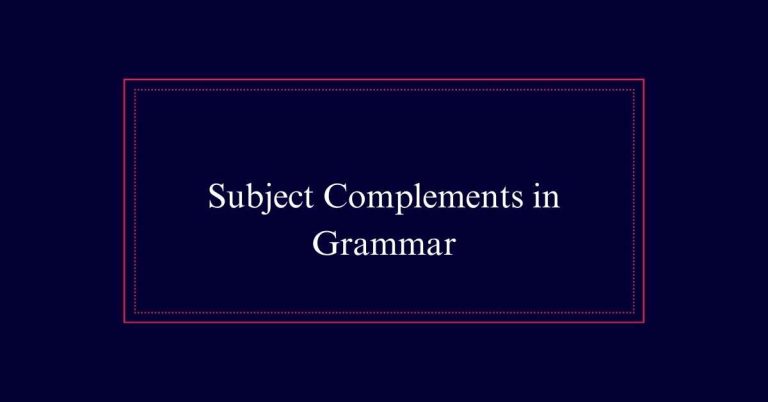What Are Suffixes in English?
Suffixes in English are morphemes added to the end of base words to change their meaning or grammatical function. They are vital in forming tenses, showing plurality, and indicating possession. Common suffixes include ‘-s,’ ‘-ed,’ ‘-er,’ and ‘-ly’.
For example, adding ‘-ed’ to ‘walk’ forms ‘walked’ to indicate past tense. Suffixes can be inflectional, altering the form of a word to express different grammatical categories or derivational, creating new words entirely.
Definition of Suffixes
Suffixes are morphemes added to the end of a base word to alter its meaning. They are an essential part of English grammar, modifying words to convey different tenses, plurality, possession, and more.
For instance, adding -s to a noun can indicate its plural form, while adding -ed to a verb shows its past tense. Suffixes can also transform words into different parts of speech, such as turning a noun into an adjective.
Types of Affixes
In addition to suffixes, understanding the types of affixes in English grammar is important for mastering language structure. Affixes are classified into two main categories: prefixes and suffixes. Prefixes are added to the beginning of a base word, changing its meaning. Examples include ‘un-‘ in ‘unhappy’ and ‘re-‘ in ‘redo.’
Suffixes, conversely, attach to the end of a base word, often altering its grammatical function. Examples are ‘-ed’ in ‘walked’ and ‘-ness’ in ‘happiness.’
Affixes can also be either inflectional or derivational. Inflectional affixes modify a word’s tense, number, or degree without changing its core meaning. Derivational affixes create a new word with a different meaning or part of speech.
Adding Suffixes
When adding suffixes to a base word, it is essential to understand the rules that govern their usage. These rules ensure the correct formation and meaning of words. For example, when a word ends in a consonant followed by a -y, the -y often changes to -i before adding the suffix. Similarly, doubling the final consonant occurs when a one-syllable word ends in a consonant-vowel-consonant pattern.
| Rule | Example |
|---|---|
| Consonant + -y changes to -i | happy -> happier |
| Doubling the final consonant | hop -> hopping |
| Dropping silent -e before adding a suffix | make -> making |
| Retaining silent -e before certain suffixes | change -> changeable |
Common Suffix Length
An essential aspect of mastering English involves understanding the typical length of common suffixes. Most common suffixes in English are short, often one or two syllables long. This brevity makes them easier to append to base words without altering the original word’s structure to a great extent.
Examples of one-syllable suffixes include -s, -ed, -er, and -ly. These suffixes are frequently used and are integral to verb conjugation and forming plurals.

Two-syllable suffixes, such as -able and -fully, are also common and help create new words and meanings.
Grammatical Suffixes
Grammatical suffixes play an essential role in modifying words to convey specific grammatical functions such as tense, plurality, and possession.
For instance, adding -s to a verb forms the third person singular present tense, while -ed marks the past tense. Plurality is often indicated by adding -s to nouns, though some nouns have irregular plural forms like ‘children’ for ‘child.’
To show possession, singular nouns typically add -‘s, whereas plural nouns ending in -s simply add an apostrophe. Reflexive pronouns use suffixes like -self for singular and -selves for plural, as seen in ‘myself’ and ‘themselves.’
Verb Conjugation
Verb conjugation in English often requires the addition of specific suffixes to indicate tense and agreement with the subject. For regular verbs, the suffix -s is added to the base form for the third person singular present tense. For example, ‘he runs.’
The suffix -ed is used to indicate the past tense, such as in ‘they walked.’ It is important to note that irregular verbs do not follow these rules and have unique spellings. Examples include ‘go’ becoming ‘went.’
Indicating Plurality
Plurality in English is often indicated by adding the suffix -s to a noun. This is the most straightforward way to show that there is more than one of something. For example, ‘cat’ becomes ‘cats’ and ‘book’ becomes ‘books.’
However, some nouns become plural in irregular ways. For instance, ‘child’ becomes ‘children’ and ‘mouse’ becomes ‘mice.’ These irregular plural forms need to be memorized as they do not follow the standard -s suffix rule.
Additionally, nouns ending in -ch, -sh, -s, -x, or -z typically add -es to form the plural, such as ‘bus’ becoming ‘buses’ and ‘box’ becoming ‘boxes.
Showing Possession
To show possession in English, suffixes are added to the end of nouns. Singular nouns typically add -‘s, while plural nouns that already end in -s add only an apostrophe. This distinguishes possessive nouns from possessive pronouns and adjectives, which do not use suffixes. Below is a table illustrating examples of possessive forms:
| Noun | Singular Possessive | Plural Possessive |
|---|---|---|
| Cat | Cat’s toy | Cats’ toys |
| Girl | Girl’s book | Girls’ books |
| Boss | Boss’s office | Bosses’ offices |
Reflexive Pronouns
Reflexive pronouns are important for indicating that the subject of the sentence is performing an action on itself. These pronouns include ‘myself,’ ‘yourself,’ ‘himself,’ ‘herself,’ ‘itself,’ ‘ourselves,’ ‘yourselves,’ and ‘themselves.’
Reflexive pronouns are formed by adding the suffix ‘-self’ for singular forms and ‘-selves’ for plural forms. They are essential for clarity in sentences.
For example, ‘She taught herself to play the piano’ clearly shows that the action is done by the subject on herself. Similarly, ‘They prepared themselves for the exam’ indicates that the group carried out the action on themselves.
Comparatives and Superlatives
Comparative and superlative adjectives are used to compare two or more things and to indicate the highest degree of a quality, respectively. Comparatives typically add the suffix -er, such as in ‘smaller’ or ‘faster.’
Superlatives use the suffix -est, as in ‘smallest’ or ‘fastest.’ For adjectives with two or more syllables, we use ‘more’ for comparatives and ‘most’ for superlatives, like ‘more beautiful’ or ‘most beautiful.’
Adjectives ending in -y change to -ier and -iest, such as ‘happier’ and ‘happiest.’ Numbers also have suffixes like -st, -nd, -rd, and -th to denote order, as in ‘first,’ ‘second,’ ‘third,’ and ‘fourth.’







